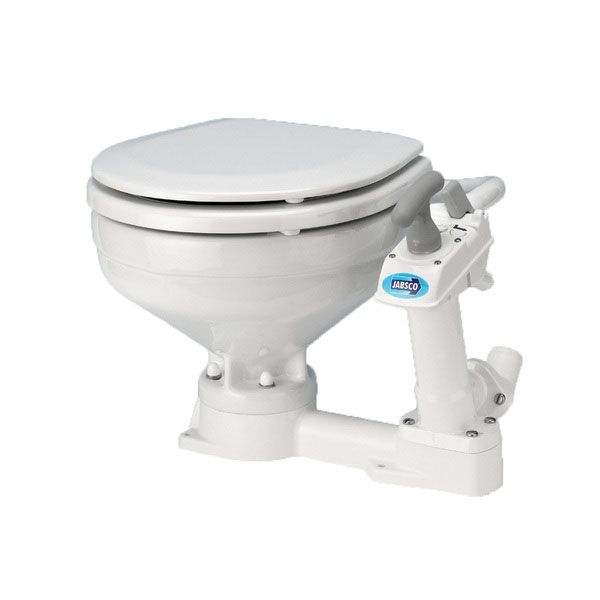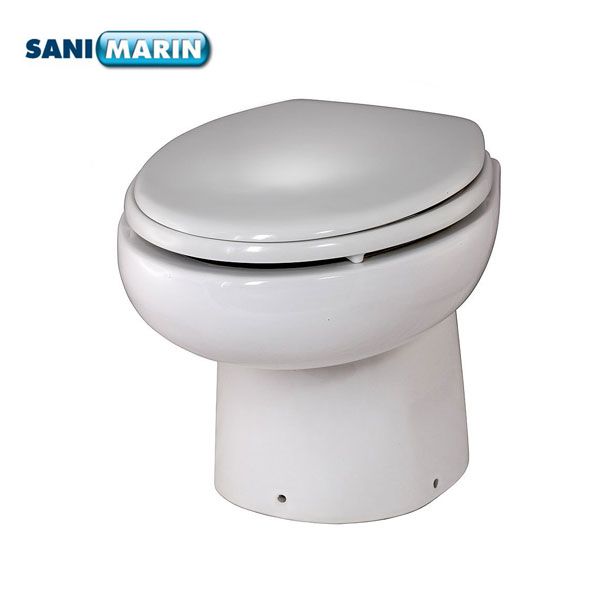The type of system you choose will depend on the type of boat you have, power supply, fresh water capacity and cruising area.
Type of Boat
Small yachts or cruisers may not have a sufficient power supply to cope with the demands of an electric toilet and therefore a manual sea toilet will be required. Larger Yachts and cruisers will probably have a more sophisticated power supply on board and should be able to cope with the additional drain of an electric toilet. Sea going vessels also have the opportunity to discharge overboard when out at sea subject, of course, to restrictions operating in that particular area and may require the provision of a holding tank as well as a waste discharge seacock. Barges and river craft will eventually be subject to certain discharge restrictions and will also have to make provision for holding tanks. These vessels normally have sufficient power on board for an electric system. Canal craft are committed to having a self contained system on board as waste has to be disposed of at a suitable sewage disposal point. The only choice is, holding tank or cassette system.
Toilet System
Water supply will depend on fresh water and holding tank capacities. Small yachts and cruisers may only have small water and holding tanks therefore a raw water supply with the facility to pump to a holding tank or overboard will be necessary. Larger vessels normally have a substantial fresh water and waste holding tank and can cope with the demands of a toilet system. The drawback with using a raw water flushing system can be that contaminated water is drawn into the inlet pipework, the toilet bowl and if allowed to stand for a protracted period, will not only discolour the bowl but also lead to noxious smells which can deter even the most hardy of mariners. The SeaSmart deodouriser will cure this problem by occasionally injecting a dose of disinfectant into the inlet line. Fresh water flushing will also prevent odours from occurring and keep the crew happy. The type of toilet can depend on many factors, personal preference, manual or electric, water supply, power supply etc.
Manual Toilets
Manual toilets are normally considered for use where space, power and weight are important factors and where water consumption is not of prime importance. These toilets can often be converted to operate with an electric macerator but are considered noisy which often outweighs any benefits.
Gravity Discharge
Gravity discharge or drop through toilets offer the simplest solution to pump out systems with the toilet sitting directly over the waste tank giving very little opportunity for problems although smell could become an issue if the tank is not pumped out on a regular basis.

Vacuum Toilets
Vacuum toilets are arguably the most efficient of toilets in relation to water usage and number of pumpouts required. Typical water usage is around 0.4litres although this needs increasing for solids. The above average costs will be offset by the savings made in pumpouts over a period of time. A vacuum is created from the vacuum pump through the vacuum tank and up to the toilet. When the vacuum has stabilised, usually between 30 to 45seconds the discharge mechanism can be operated and the vacuum removes the contents of the bowl at high speed, pulls it through the vac tank and up to the vac pump from where it is then pushed into the waste tank.

Macerator and Centrifugal
Macerator and centrifugal toilets are the closest in design to a normal household toilet. They can be freestanding and will pump a considerable distance to a remote waste tank. Many of these toilets have eco flush facilities therefore reducing the amount of water used, a boon where water and waste capacity is limited. Both macerator and centrifugal toilets operate in a similar manner, waste is discharged from the bowl and into a chamber containing either a plastic or stainless steel blade which reduces the waste matter to a “slurry” and sends it to the waste tank. The better quality units are quiet and efficient.
Cassette Toilets
Cassette toilets are favoured by many as the answer to the cost of pumping out an in built holding tank. There are at present three basic types of cassette toilet, the simple plastic type which has a self contained wat er supply and the bowl and tank are clipped together until the tank is full and requires carrying off to be emptied and cleaned. A back to basics approach to sanitation situations. A more sophisticated system consists of a plastic floor mounted toilet with an integral tank which requires a trap door behind the toilet to enable the full cassette to be removed and emptied.


